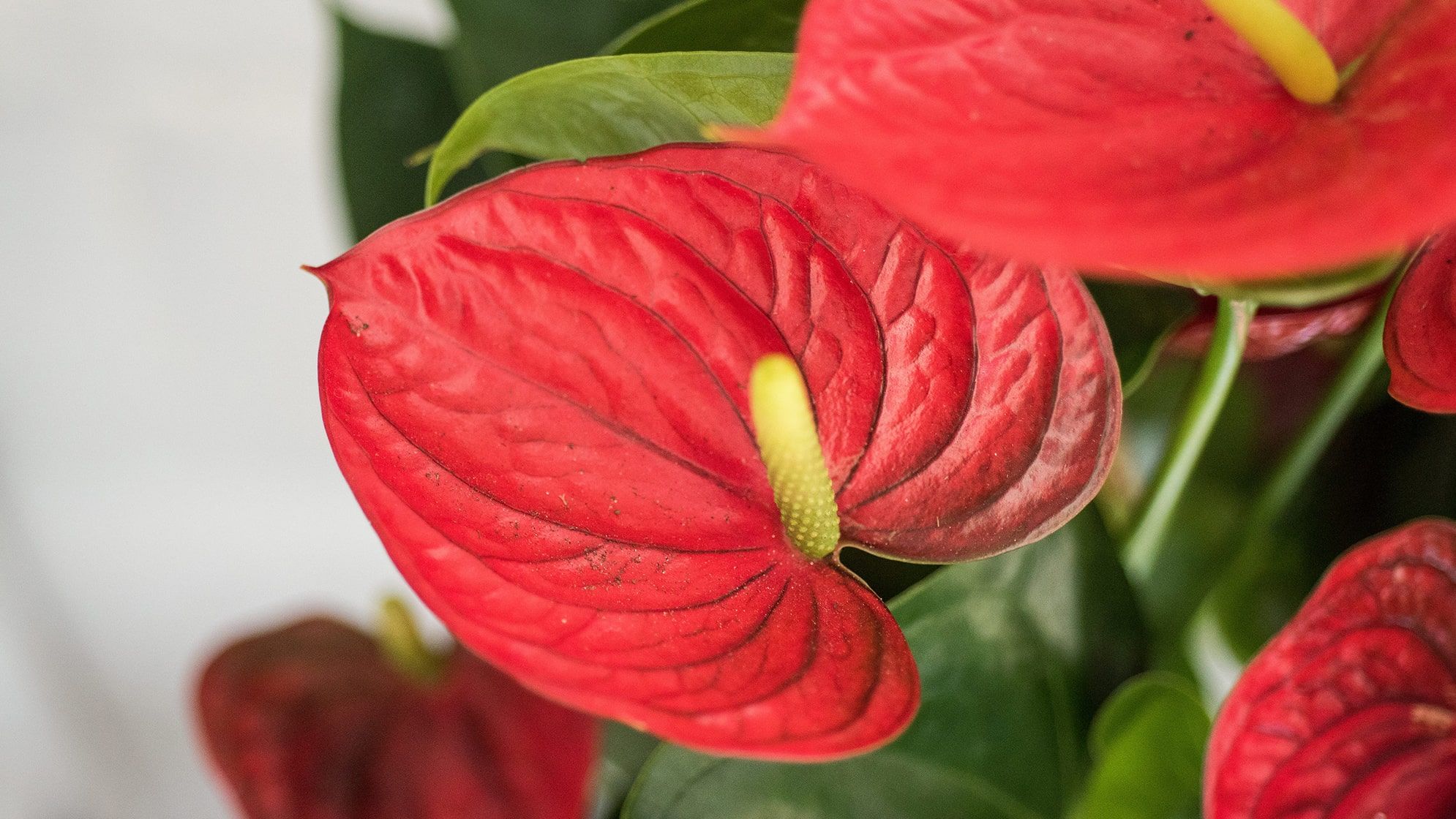If you’re looking for a tropical houseplant that’s both low-maintenance and visually stunning, the Anthurium is the perfect choice. Known for its glossy, heart-shaped leaves and vibrant, waxy flowers, Anthurium adds an exotic touch to any indoor or shaded garden space. Its long-lasting blooms come in striking shades of red, pink, white, and even purple — making it a favorite for plant enthusiasts and interior decorators alike.
Whether you’re a seasoned green thumb or a complete beginner, this guide will walk you through how to start growing Anthurium successfully, from choosing the right variety to keeping it healthy and thriving year-round.

What Is an Anthurium?
Anthurium is a genus of over 1,000 species of flowering plants native to Central and South America. It belongs to the Araceae family, alongside other popular houseplants like philodendrons and peace lilies. Commonly known as the flamingo flower, laceleaf, or tailflower, Anthuriums are cherished for their ornamental foliage and showy spathes — the colorful, petal-like structures that surround the flower spike.
Some popular Anthurium varieties include:
- Anthurium andraeanum (Flamingo Flower)
- Anthurium scherzerianum (Pigtail Plant)
- Anthurium crystallinum (known for its velvety, deeply veined leaves)

Why Grow Anthurium?
Aside from their exotic beauty, Anthuriums are relatively easy to care for and adapt well to indoor environments. Their benefits include:
- Air purification: Anthuriums help clean indoor air by removing toxins.
- Long-lasting blooms: Their flowers can last up to 8 weeks or more.
- Compact growth: Perfect for apartments, offices, or shaded patios.
- Year-round color: Under the right conditions, Anthuriums can flower year-round.

How to Start Growing Anthurium: Step-by-Step
1. Choose the Right Anthurium Variety
When selecting an Anthurium plant, consider your preferences and space:
- For bright, colorful flowers: Choose Anthurium andraeanum.
- For unique foliage: Opt for Anthurium crystallinum or Anthurium clarinervium.
- For unusual curly flowers: Try Anthurium scherzerianum.
You can purchase Anthurium plants from local nurseries, garden centers, or online plant shops.
2. Find the Perfect Spot
Anthuriums love bright, indirect light. Direct sunlight can scorch their leaves and flowers, while low light reduces flowering. Ideal locations include:
- Near east or north-facing windows.
- Well-lit bathrooms or kitchens with filtered light.
- Shaded spots on patios or balconies (if outdoors).
Avoid placing them near air conditioning vents or drafty windows.

3. Use the Right Soil Mix
The secret to a thriving Anthurium is well-draining, light, and airy soil. They are epiphytes in the wild, often growing on trees and absorbing moisture from the air.
Recommended soil mix:
- 1 part orchid bark
- 1 part perlite
- 1 part peat moss or coco coir
This blend mimics their natural environment, ensuring good drainage and aeration.
4. Potting and Repotting
Choose a pot with drainage holes to prevent waterlogging. Start with a 4-6 inch container for young plants. Anthuriums prefer slightly snug pots but should be repotted every 2-3 years or when roots outgrow the container.
How to pot Anthurium:
- Place a layer of pebbles or coarse gravel at the bottom for extra drainage.
- Add a portion of your prepared soil mix.
- Gently remove the Anthurium from its nursery pot, loosen the roots, and place it in the new pot.
- Fill the remaining space with soil mix and firm it around the plant.
- Water thoroughly until it drains from the bottom.

5. Watering Anthurium Correctly
Anthuriums prefer slightly moist soil but dislike sitting in water. Overwatering is the fastest way to harm them.
Watering tips:
- Check the top 1-2 inches of soil with your finger; water only if it feels dry.
- Water deeply, allowing excess to drain out.
- Reduce watering frequency in winter.
- Use room-temperature, distilled, or rainwater if possible to avoid chlorine damage.
Typically, watering once a week in summer and once every 10-14 days in winter works well.

6. Maintain Proper Humidity
Anthuriums thrive in high humidity environments (60%-80%). If your home is dry:
- Mist the leaves lightly with water.
- Use a humidity tray filled with pebbles and water beneath the pot.
- Place the plant near other houseplants to create a microclimate.
- Invest in a small humidifier for consistently healthy plants.
7. Feed Your Anthurium
To promote lush foliage and vibrant flowers, feed Anthurium with a balanced, water-soluble fertilizer.
Fertilizing tips:
- Use a fertilizer with an N-P-K ratio of 10-30-20 for flowering Anthuriums.
- Feed once a month during spring and summer.
- Skip fertilizing in winter when growth slows.
Always dilute the fertilizer to half the recommended strength to avoid root burn.
8. Pruning and Cleaning
Regular maintenance keeps your Anthurium looking fresh:
- Remove yellow or damaged leaves with sterile scissors.
- Cut off faded or wilted flowers to encourage new blooms.
- Wipe leaves with a damp cloth to remove dust and improve photosynthesis.
9. Propagation Tips
Want more Anthuriums? You can easily propagate them via division:
- Gently remove the plant from its pot.
- Separate clumps of roots and stems, ensuring each has at least one leaf and a healthy root system.
- Pot the divisions in fresh soil and water lightly.
This is best done in spring or early summer.
Common Anthurium Problems and Solutions
| Problem | Cause | Solution |
|---|---|---|
| Brown leaf tips | Low humidity or overwatering | Increase humidity, adjust watering. |
| Yellowing leaves | Overwatering or poor drainage | Check soil moisture, improve drainage. |
| Lack of flowers | Insufficient light or nutrients | Move to a brighter spot, fertilize monthly. |
| Root rot | Waterlogged soil | Repot in fresh, well-draining soil. |
Final Thoughts
Anthuriums are one of the most rewarding houseplants to grow. Their striking blooms and lush, glossy leaves bring life and tropical charm to any space. By following this simple guide — from selecting the right variety and soil to watering, feeding, and propagating — you’ll enjoy a thriving Anthurium plant that can last for years.
With minimal effort, your Anthurium will reward you with vibrant flowers, air-purifying benefits, and a splash of exotic beauty in your home or garden.





